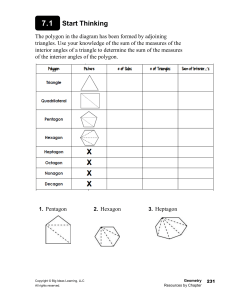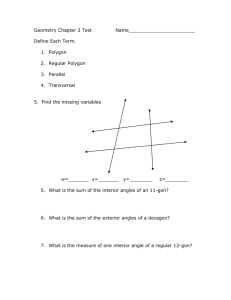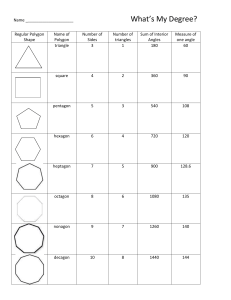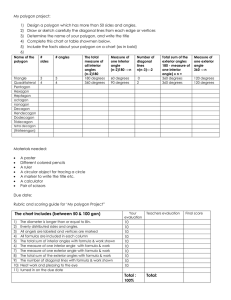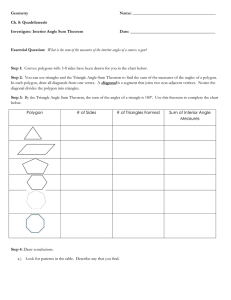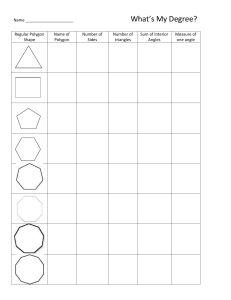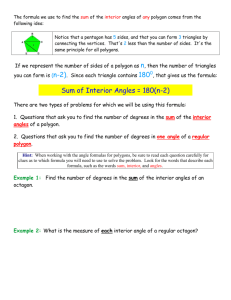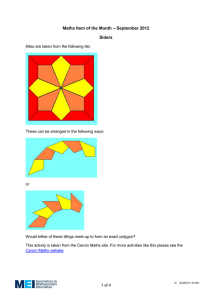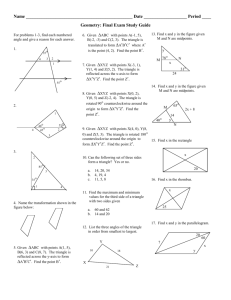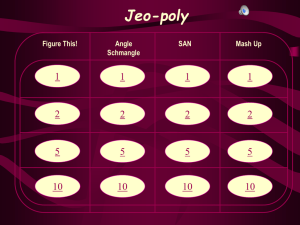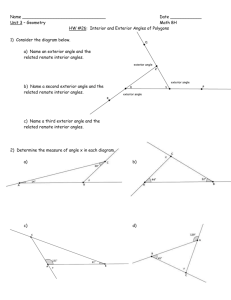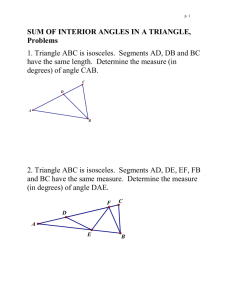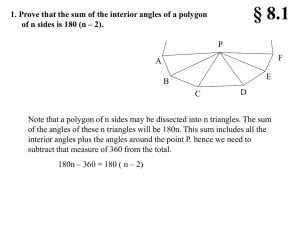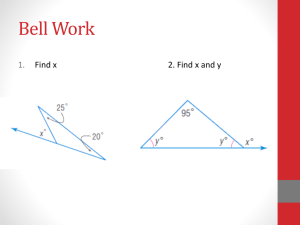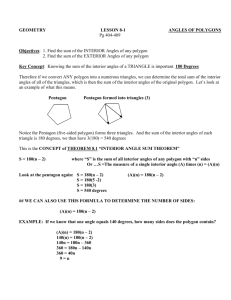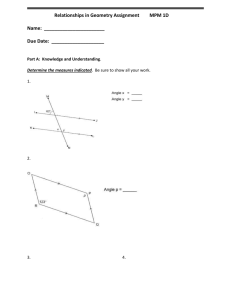Investigation – Angles in polygons
advertisement
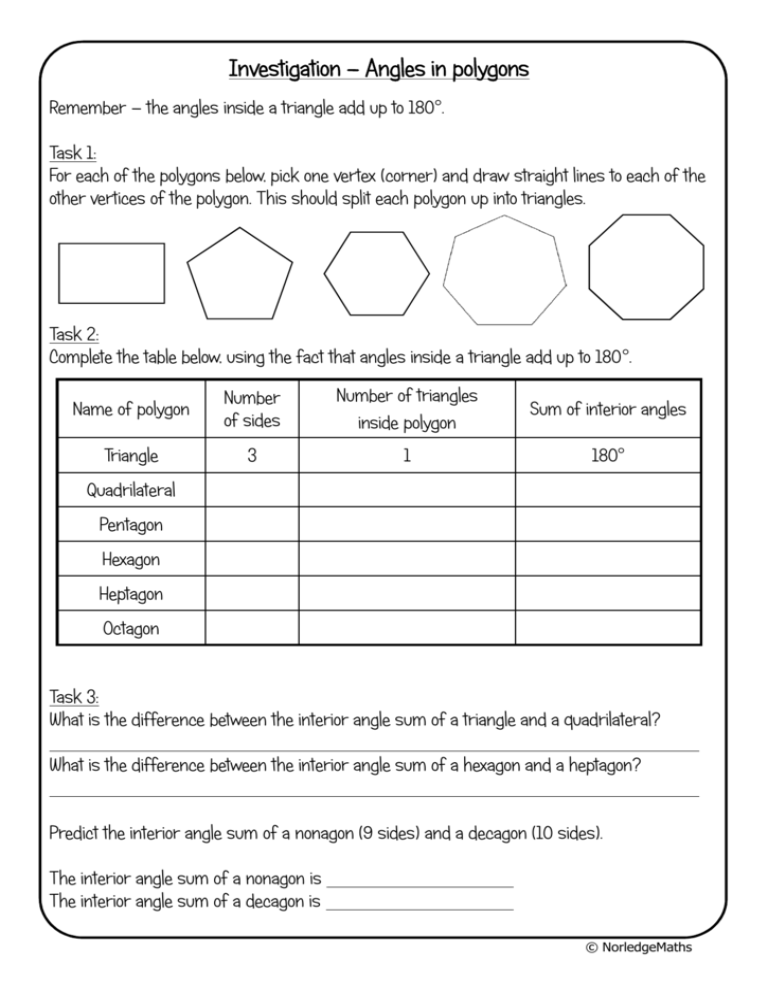
Investigation – Angles in polygons Remember – the angles inside a triangle add up to 180°. Task 1: For each of the polygons below, pick one vertex (corner) and draw straight lines to each of the other vertices of the polygon. This should split each polygon up into triangles. Task 2: Complete the table below, using the fact that angles inside a triangle add up to 180°. Name of polygon Number of sides Number of triangles inside polygon Sum of interior angles Triangle 3 1 180° Quadrilateral Pentagon Hexagon Heptagon Octagon Task 3: What is the difference between the interior angle sum of a triangle and a quadrilateral? What is the difference between the interior angle sum of a hexagon and a heptagon? Predict the interior angle sum of a nonagon (9 sides) and a decagon (10 sides). The interior angle sum of a nonagon is The interior angle sum of a decagon is © NorledgeMaths In the box below, draw a nonagon and a decagon. Split them up into triangles and check that your predictions were correct. Task 4 - Extension: If the polygon is regular, all the sides must be the same length and all the angles must be the same size. Using this fact, can you work out the size of one of the angles in: a) A regular pentagon? b) A regular hexagon? Task 5 – Extension: Can you write a general rule relating the number of sides of a polygon to its interior angle sum? © NorledgeMaths
